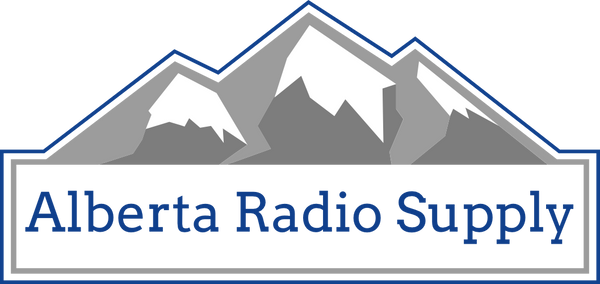
Why Do You Need Radio Rack Mounts: Optimizing for Peak Efficiency
Share
Key Takeaways:
-
Ensure compatibility by choosing the right mounts for your equipment.
-
Follow recommended installation steps to enhance safety and efficiency.
-
Prioritize maintenance to reap long-term benefits, keeping operations streamlined and effective.
-
Invest in quality mounts to sustain operational excellence across dynamic broadcasting environments.
The world of broadcasting is heavily reliant on precision, organization, and efficiency. Achieving such high standards requires the integration of specialized equipment like radio rack mounts. These mounts are not merely an accessory but a fundamental part of enhancing the operational capacity of radio setups.
Today, we'll delve into why radio rack mounts are indispensable, exploring their role in improving efficiency, safety, and organization in radio equipment installation and maintenance.
Table of Contents
-
Introduction to Radio Rack Mounts
-
Key Entities and Relationships
-
Attributes and Examples
-
Advanced Relationships
-
Practical Applications and Conclusion
Introduction to Radio Rack Mounts
Radio rack mounts serve as a backbone for organizing and securing radio equipment. Designed to offer stability and ease of access, they play a vital role in various settings, from commercial to public safety sectors. This article unpacks the need for these essential tools, examining how they boost efficiency, ensure safety, and support maintenance. By the end of this discussion, you'll understand why these mounts are a worthwhile investment.
We'll explore:
-
The basics of radio rack mounts, unraveling compatibility and installation processes.
-
Safety considerations and efficiency gains associated with their use.
-
Maintenance requirements and long-term benefits that come with adopting this technology.
Armed with industry insights and case studies, this article serves as a comprehensive guide to understanding the critical role of radio rack mounts in modern broadcasting.
Key Entities and Relationships
To appreciate the benefits of radio rack mounts, it's crucial to understand the key entities involved and how they interrelate.
Radio Equipment and Rack Mounts
At the heart of this discussion are two principal entities: radio equipment and rack mounts. Compatibility between these components ensures seamless integration and functionality.
Installation Process and Safety Considerations
The installation isn't just about placing radios on mounts. It involves meticulous steps such as bolting and side railing, which secure the equipment and help mitigate risks associated with falls or improper orientations. Safety, therefore, becomes a byproduct of well-organized installation processes.
Maintenance and Efficiency
By simplifying access and visibility, rack mounts facilitate quicker and more efficient maintenance routines. This accessibility translates to labor savings as engineers can service and replace equipment without unnecessary disassembly. Over time, these savings cumulate into significant operational advantages.
Attributes and Examples
Compatibility: Types of Radios That Require Rack Mounts
The landscape of radio equipment is diverse, with numerous models benefiting from rack integration. These mounts accommodate various types, including those used in public safety, amateur radio, and commercial broadcasting. For instance, a 19" Radio Rack Mount System with replaceable radio inserts caters to both public safety and commercial needs, streamlining equipment replacement and integration.
Installation Process: Practical Steps
Installation involves several steps, each critical for optimal performance. From selecting the correct mount type to ensuring secure bolting, each task must be executed precisely. Industries have continuously vouched for guides and templates that describe these processes in detail, emphasizing their importance for both novices and seasoned technicians.
Safety Considerations: Mitigating Risks
The risks associated with improper installation are significant. These include equipment damage, safety hazards to personnel, and poor operational capability. Radio rack mounts are intrinsically designed to address these concerns by ensuring secure and stable equipment placement. This not only protects the investment but also enhances safety records.
Efficiency Improvements
Time efficiency is one of the notable advantages of using rack mounts. Typical setups reduce assembly and dismantling times while simplifying wiring and connectivity processes. This efficiency allows for responsive and adaptive broadcasts, crucial in dynamic broadcasting environments where every second counts.
Advanced Relationships
Commercial and Long-Term Benefits
Why should businesses invest in radio rack mounts? Simply put, they provide a return on investment through prolonged equipment lifespan and reduced maintenance costs. The long-term benefits far exceed initial expenses, as evidenced by numerous industry case studies.
Comparative Analysis to Other Methods
Compared to floor or table mounting, rack mounts offer a more robust, organized, and efficient alternative. This organization supports better signal quality and transmission reliability, key factors for any broadcasting enterprise striving for excellence.
Practical Applications and Conclusion
Incorporating radio rack mounts into your broadcasting setup is a strategic decision with wide-ranging implications. These mounts are not only about immediate efficiency; they represent a commitment to long-term operational excellence. From enhancing safety to ensuring rapid maintenance, their role in transforming broadcast operations is irrefutable.
Today's radio environments are defined by the ability to adapt and maintain standards. With the insights shared here, it becomes clear why embracing radio rack mounts is not just optional—it's essential.
By understanding these relationships and leveraging the right technology, businesses position themselves at the forefront of broadcasting, ready to meet the challenges of tomorrow.
Radio rack mounts are thus a quintessential component in the sophisticated tapestry of modern broadcasting, their utility adapting to the ever-evolving needs of the industry.
